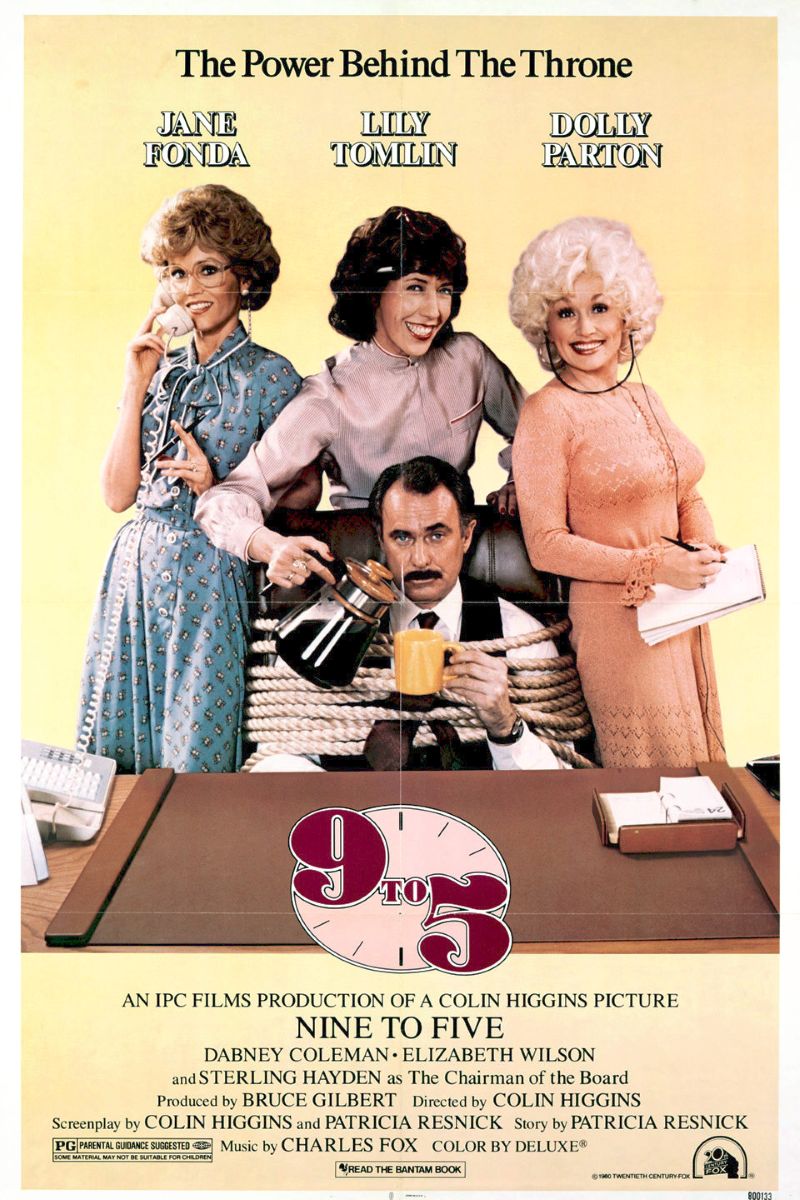
Erin Brockovich
Erin Brockovich
Based on true events, this film tells the story of single mother Erin Brockovich who, through tenacious will and relentless effort, exposed corporate environmental pollution scandals and fought for justice for victims. The film demonstrates how ordinary women can display extraordinary strength in adversity.
Cast
Related Topics
🎥 Film Analysis & Review
“Erin Brockovich” stands as a powerful testament to the extraordinary capabilities of ordinary women, exploring the complex relationships between gender, class, education, and power through the true story of Erin Brockovich herself. Steven Soderbergh skillfully combines personal struggle with social justice, creating a work that is both inspirational and profoundly feminist in its implications and execution.
Challenging Professional Authority
The character of Erin herself carries strong feminist significance. As a single mother without a law degree, she represents marginalized women from society’s lower rungs—economically struggling, lacking higher education, bearing heavy family responsibilities. Yet it is precisely such a woman, marginalized by mainstream society, who ultimately becomes the hero fighting against corporate giants. This contrast provides not only dramatic effect but more importantly challenges traditional notions of professional competence and authority.
Erin’s success directly confronts elitist knowledge systems. In the highly specialized field of law, she succeeds not through degree credentials or professional training, but through deep understanding of ordinary people’s lives, keen observation, and relentless effort. Her ability to gain victims’ trust stems from sharing their social class and understanding their struggles and needs. This triumph of “grassroots wisdom” over elite knowledge carries profound democratic and feminist significance.
Workplace Gender Dynamics
The film provides sharp depiction of gender discrimination women face in professional settings. Erin’s clothing style—tight-fitting, revealing, brightly colored—appears completely out of place in the conservative law firm environment. However, the film cleverly uses this visual conflict to explore deeper questions: why does women’s appearance always become a standard for judging professional competence? Erin’s refusal to change her style represents not merely personal fashion choices but silent protest against workplace gender norms.
Her insistence on maintaining her authentic self while proving her professional worth challenges the false dichotomy that forces women to choose between femininity and credibility. The film suggests that professional competence should be evaluated based on results and dedication rather than adherence to arbitrary dress codes or behavioral expectations.
Redefining Motherhood and Career
The film’s treatment of motherhood deserves particular attention. Traditional narratives often portray career success and maternal responsibilities as irreconcilable contradictions, but “Erin Brockovich” presents a more complex reality. Erin’s frequent absence from home due to work indeed creates pressure on her relationship with her children. However, rather than moralizing this situation simply, the film shows the real dilemma facing women: the difficult balance between economic independence and family responsibility.
The movie avoids the trap of presenting motherhood as either completely fulfilling or entirely constraining. Instead, it shows how Erin’s fight for environmental justice serves as a form of activism that ultimately benefits all families, including her own. Her work represents not selfish career ambition but commitment to community welfare and future generations’ health.
Supportive Male Characters
George, Erin’s neighbor and eventual partner, represents an interesting departure from traditional masculine roles. Rather than competing with or constraining Erin’s ambitions, he provides crucial emotional and practical support. His willingness to care for her children enables her professional focus, representing a role reversal where male domestic contribution supports female career development—a progressive concept for its time.
Similarly, lawyer Ed Masry (Albert Finney) demonstrates how male allies can support women’s professional advancement without claiming credit or control. His recognition of Erin’s unique talents and his trust in her unconventional methods illustrate productive mentorship across gender lines.
Environmental Justice and Feminist Ethics
Environmental justice forms the film’s core theme, connecting naturally with feminist concerns. Ecofeminist theory points out that environmental destruction often relates to patriarchal exploitation mindsets, with women and children bearing the heaviest consequences. In the Hinkley contamination case, we see this pattern: large corporations prioritize profit over environmental and public health, while ordinary families—particularly women caring for sick family members—bear the consequences.
Erin’s approach to building relationships with victims embodies feminist ethics of care. Rather than appearing as a condescending expert, she communicates as friend and neighbor. She remembers each person’s name and story, caring about their health and family circumstances. This method based on empathy and interpersonal relationships contrasts sharply with traditional male-dominated legal professional culture.
Corporate Power and Resistance
The corporation PG&E in the film represents the dark side of patriarchal capitalism. It not only economically exploits ordinary people but lies and deceives about environmental and health issues. Facing such powerful opposition, Erin’s victory carries deeper symbolic meaning: it proves that individual moral force can overcome institutionalized injustice, and ordinary people’s dignity and health rights are inviolable.
The film’s portrayal of corporate malfeasance extends beyond simple villain-versus-hero dynamics to examine systemic issues of power, accountability, and public health. The company’s willingness to poison an entire community for profit reflects broader patterns of corporate irresponsibility that disproportionately affect working-class communities.
Class Consciousness and Economic Justice
Erin’s background as a working-class single mother provides her with unique insights into the victims’ experiences. Her lack of formal education becomes an advantage rather than handicap because it allows her to communicate effectively with community members who might feel intimidated by traditional legal professionals. This dynamic challenges classist assumptions about who possesses valuable knowledge and expertise.
The film demonstrates how economic necessity can motivate social activism. Erin’s initial involvement in the case stems from personal financial needs, but her commitment deepens as she recognizes the broader implications of corporate environmental crimes. This progression shows how individual circumstances can connect with collective struggles for justice.
Media Representation and Cultural Impact
The film’s success carries important cultural significance. It proved that female-centered stories could achieve both commercial success and critical recognition, paving the way for more feminist films. Julia Roberts’s outstanding performance not only won her an Oscar but successfully brought a complex, controversial female character to mainstream audiences.
The movie’s commercial and critical success demonstrated audience appetite for stories about women who challenge systems and fight for justice. This success influenced subsequent filmmaking decisions and helped normalize narratives centered on women’s professional and activist achievements.
Contemporary Relevance
More than two decades later, “Erin Brockovich” remains relevant to contemporary discussions about environmental justice, corporate accountability, and women’s professional advancement. Current environmental movements continue to be led significantly by women, and the film’s themes about grassroots activism and community organizing speak to ongoing social justice efforts.
The movie’s portrayal of how ordinary individuals can challenge powerful institutions provides inspiration for contemporary activism while illustrating the personal costs of such commitments. Erin’s story reminds viewers that social change often requires individual sacrifice and sustained dedication.
Feminist Critiques and Limitations
Some feminist scholars have criticized aspects of the film’s approach, noting that Erin’s success somewhat depends on her sex appeal and relationships with men, potentially reinforcing stereotypes that women must use some form of gendered performance to gain power. Additionally, the film’s emphasis on individual heroism might overshadow the importance of collective action and systemic change.
However, these critiques should be balanced against the film’s overall positive impact in presenting a complex female protagonist who succeeds through determination, intelligence, and moral conviction rather than passive compliance or traditional feminine roles.
Legal System and Access to Justice
The film explores how the legal system can both enable and constrain justice. While Erin works within legal frameworks to achieve victory for the Hinkley community, her success depends partly on finding lawyers willing to take significant financial risks for uncertain outcomes. This dynamic highlights ongoing issues about access to justice and the role of class resources in legal proceedings.
The movie’s portrayal of legal proceedings emphasizes the importance of community testimony and personal narratives rather than abstract legal arguments. This approach validates the experiences and knowledge of ordinary people while demonstrating how effective legal advocacy must connect with human realities.
Conclusion
“Erin Brockovich” succeeds as both entertainment and social commentary, providing audiences with an inspiring example of how individual determination can create meaningful change. The film’s lasting impact lies in its demonstration that expertise and authority can take many forms, and that society benefits when diverse perspectives and experiences are valued and heard.
Through Erin’s story, the movie challenges viewers to reconsider assumptions about professional competence, social value, and the potential for ordinary people to accomplish extraordinary things. It reminds us that justice often requires someone willing to speak truth to power, regardless of credentials or social status.
Most importantly, the film illustrates that environmental and social justice issues affect everyone but that meaningful change often begins with individuals who refuse to accept injustice. Erin Brockovich’s legacy extends beyond her specific case to represent the broader principle that every person deserves clean air, water, and truthful information about threats to their health and communities.
The movie’s enduring appeal stems from its fundamental optimism about human potential and social change, proving that when ordinary people find their voices and refuse to compromise their principles, they can indeed move mountains—or in this case, move multinational corporations to acknowledge responsibility and provide compensation for their harmful actions.
🏆 Awards & Recognition
- • Academy Award for Best Actress
- • Golden Globe Award for Best Actress
- • BAFTA Award for Best Actress
⭐ Ratings & Links
Related Recommendations
讨论区
分享您的想法和观点
加入讨论
分享您的想法和观点
加载评论中...

